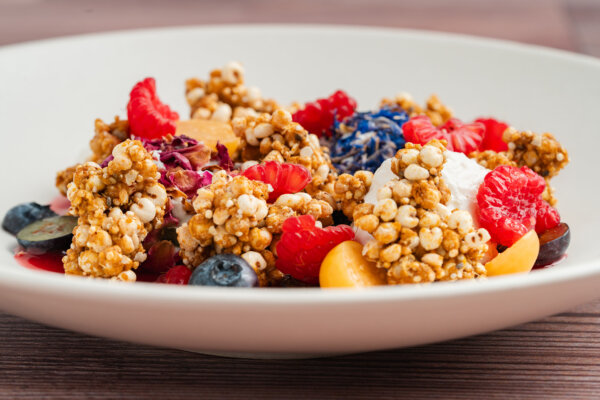
Senior Development Chef Andy Jones of Nottingham, UK, joined the Griffith Foods family in 2004. Previously, he was a chef at Tankersly Manor Hotel, the House of Albert Roux and the Grand Amsterdam Hotel. In this blog about Fired Up Flavors, Chef Andy talks about the enduring allure of grilled and smoked foods and some trends shaping the future of barbecue.
A Brief History
Grilling, smoking and barbecuing have a long history, going back to our earliest days of meal preparation. I think there’s something intrinsically attractive about cooking with fire and smoke, something that’s almost hardwired into us. And this is true across many cultures. Smoking has long been a simple, easy way to preserve meat.
In the US, barbecuing became a fixture of post-World War II suburbia, as homeowners took the opportunity to enjoy cooking in their backyards. Korea has a robust barbecue tradition, with bulgogi being the most popular. India is famed for tandoori cooking using a charcoal fire, a method that may have been imported from Persia. Argentina is known for asado, roasting beef, lamb and other meats over charcoal, and for South Africans this takes the form of a braai, grilling rustic sausages, game and more. Both are known for their social event to bring family and friends together.
These days, outdoor grilling, smoking and barbecuing are accessible and attractive to many families, particularly in good weather. At home, cooks have the option of starting a dish in the oven and finishing it on the grill. In less ideal weather, I think more people probably look for this type of cuisine away from home, in quick-serve and other restaurants.
Trends in Grilling and Smoking
In UK stores, we’re seeing more barbecue seasoned packs of marinated meat with various region-specific flavours, marinades and finishing sauces, giving consumers more flexibility and authenticity. Retail packs often feature summer imagery and vibrant colors to make the meats more attractive. Restaurants, meanwhile, are enticing diners with kitchens that readily share the welcoming aroma of charcoal and wood grilled meats.
While food service operators often have an advantage when it comes to expert seasoning and execution of grilled meats and vegetables, many people are also grilling delicious food at home. Fired up flavour can be experienced easily just by grilling sausages and burgers, preferably with charcoal and smoking wood.
Right now, we see more restaurants offering a variety of meat types and sauces, allowing for significant customization by the consumer. Going forward, I think we’ll see more outlets offering choices on seasoning rubs and even the type of smoking wood used. This would take customization to another level. Another innovation could be meat flights on platters, offering various cuts of meat, rubs, spices, seasonings and sauces. These could be global, regional or local, with a mix of colors, flavours and textures.
Why I love Fired Up Flavors
I’m personally drawn to cooking with grills and smokers. You can introduce so much flavour variety and nuance into a finished dish based on the rub and marinate, a sauce added during or after cooking, and the type of smoking wood.
As for tips, I like to add a small amount of the rub to the accompanying sauce, helping the sauce pair perfectly with the flavours of the meat and rub. Used by some of the world’s best pit masters, this little trick puts the spotlight squarely on the meat, making it the meal’s hero.
Another thing to consider is what type of smoking wood would be best for a specific meat cut or recipe. Oak, which tends to impart good flavour without being overpowering, is a strong starting point for beginners working with beef, lamb and sausages. Maple is more subtle, while mesquite is distinctive and more intense. Other smoking woods include pecan, cherry, apple and alder. And you can also use your own combinations of different woods. The options are truly limitless!



